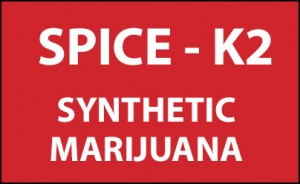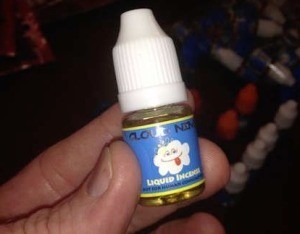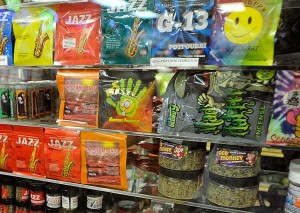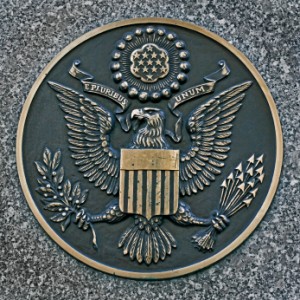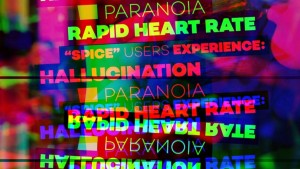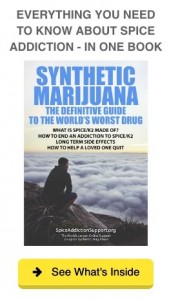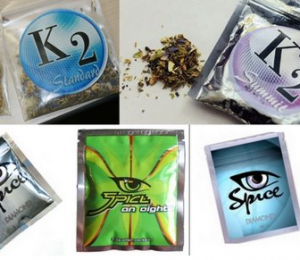Drugs – Spice
Spice
What Is Spice / K2?
The Facts on Synthetic Marijuana
Spice / K2: It’s Not What You Think!
Many people have heard about Spice or K2, also known as synthetic cannabis, fake pot, synthetic marijuana, legal weed, herbal incense and potpourri.
Most people, though, think ‘spice’ is a seasoning for your food like paprika or pepper. They think ‘K2’ is a famous mountain.
And that’s exactly what the makers of this dangerous drug want non-users to think…
Most people have no idea how this awful synthetic drug is affecting millions of people all over the world.
The word is slowly leaking out, however, as reports to Poison Control and emergency room visits have skyrocketed over the past few years.
So, what exactly is Spice / K2?
What Does Spice Look Like?
Traditional smoked Spice/K2 looks like herbal tobacco, or natural marijuana.
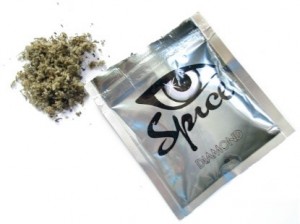 It’s actually made from dried plant material and chopped up herbs in a mixture of colours including beige, cream red and brown. The active ingredients are sprayed onto the plant material.
It’s actually made from dried plant material and chopped up herbs in a mixture of colours including beige, cream red and brown. The active ingredients are sprayed onto the plant material.
The most popular brands sold today are Spice and K2.
But Spice is actually sold under more than 500 names including Mojo, Scooby Snax, Black Mamba and Annihilation.
Today, vaping the liquid form of synthetic marijuana is a fast-rising trend. The increasing popularity of e-cigarettes, vape pens and hookah pens – especially in high schools and universities – is the reason behind this shift.
What Is Spice Made Of?
Natural marijuana gains its mind-altering effects from a chemical known as THC.
Synthetic marijuana, on the other hand, is coated with synthetic cannabinoids – a family of over 700 research chemicals.
In other words, synthetic marijuana / K2 / Spice is completely different than natural marijuana.
In 2008, the scientific and law enforcement communities began to study what was actually contained in synthetic cannabis mixtures. The result of the scientific analyses was alarming.
Analysis showed that rather than being a simple mixture of harmless herbs, such as canavalia maritima, leonotis leonurus, zornia latifolia and others, the product had in fact been sprayed with synthetic cannabinoids.
These are not the “All Natural” ingredients listed on their packaging and on the sellers’ web sites. These chemicals are similar to natural cannabinoid found in marijuana, THC – tetrahydracannabinol, but affect brain receptors differently.
Spice and K2 may contain one of many synthetic cannabinoids such as JWH-018, JWH-073, JWH-200, AM-2201 UR-144, XLR-11, AKB4, cannabicyclohexanol and AB-CHMINACA, AB-PINACA or AB-FUBINACA. Even the prescription drug, phenazapam, has been found in some products.
Synthetic cannabinoids happens to fit into the same receptors that THC latches onto in the brain, so they can have an effect similar to THC.
However, some synthetic cannabinoids are 100X stronger than THC and many operate on other brain receptors, too.
This can cause a number of significant negative side effects including high blood pressure, blurred vision, heart attack, vomiting, seizures, hallucinations, and severe anxiety and paranoia.
Deaths have also been associated with use of the drug.
Synthetic marijuana is not sold as a single brand, nor does it make use of just one ingredient.
There are a number of different manufacturers who use the same basic approach, but produce very different chemicals.
How Is Synthetic Marijuana Made?
It wasn’t long after the use of Spice & K2 became available that people started experiencing and reporting adverse side effects, including serious psychosis.
Synthetic cannabinoids are produced as an oil or a crystalline powder that can easily be sprayed on plant material or any other low cost garbage the manufacturers can get away with to create a product that can be smoked and provide some kind of high.
Most spice manufacturers don’t follow high manufacturing standards. Many of the chemicals are produced in cheap basement labs in China or Russia.
Because of the wide variety of chemicals involved and the sloppy manufacturing methods used to produce them, the health risks of one batch may not be the same as another batch, turning use of the drug into a game of Russian roulette.
 Chemical impurities also carry additional, and possibly much greater, risks.
Chemical impurities also carry additional, and possibly much greater, risks.
In liquid forms of Spice or K2, the variety of chemicals may be greater. Some suspect that a few brands of liquid Spice may contain traces of synthetic psychedelics such as 2C-P.
Analysis by the German government in 2008 showed that some products contained almost none of the supposedly mild traditional herbs that were advertised as ingredients.
Around the world, governments have begun to pay attention to spice. One after another, countries find that these products, far from being innocent, contain very dangerous artificial chemicals which are responsible for producing the so called “natural” psychotropic effects.
Spice manufacturers continue to develop new varieties of chemicals in an attempt to get around new laws against synthetic cannabis.
Very few synthetic cannabinoids have been tested on human beings, so none of them can be considered safe.
Where Did Spice Come From?
Spice (synthetic cannabinoid) was first sold as a recreational drug in 2004, in the UK.
By 2006, it had gained a considerable hold on the market, and the brand name Spice (along with another brand, K2) had become a generic term for all synthetic cannabis.
At first, people believed Spice was simply a mixture of harmless herbs that had a similar effect to marijuana, so it was legally sold all over the world, especially via the internet. It was attractively packaged in small colourful sachets, and generally marketed as a herbal smoking tobacco substitute, or as incense. The packaging had a kind of 60’s, summer of love, retro feel, which gave it an aura of harmlessness.
The product itself looks very much like herbal tobacco or even potpourri.
In fact, Spice is often sold as potpourri, room deodorizer or incense, purporting to be an innocent product for scenting rooms and will usually have the warning, “Not for human consumption” on the packet.
But this is just a marketing strategy to ward off legal threats.
Consumers, through the grapevine, know perfectly well that they are buying something intended to be smoked in a joint or a bong pipe.
Is Synthetic Marijuana Legal?
In most countries around the world, including the United States, synthetic cannabis is illegal. Spice use is also banned for U.S. Military personnel.
There are, unfortunately, some countries around the world where synthetic cannabinoids remain legal. This is creating a tangle of problems for authorities in the U.S and is probably increasing the use of synthetic cannabis.
In May, 2013, the Drug Enforcement Agency (DEA) took action and formally banned Synthetic Marijuana as a Class I drug, making distribution of legal weed a federal crime in the US.
Unfortunately, the DEA action only covered a small number of chemicals, leaving pushers legal room to sell different chemicals in their place. Some states are taking further action to limit all forms of spice.
The manufacturers of synthetic cannabis work hard to stay one step ahead of the law and are continuously creating new compounds to side-step regulations.
Today, it’s basically a cat and mouse game between the creators of these dangerous substances and the legislators who seek to protect the unsuspecting public, especially young people who are easily conned into thinking that they have somehow found legal, safe weed.
As fast as common synthetic cannabinoids are banned, the producers create different versions which can slip through the legal net. This is creating huge problems as the authorities attempt to cut of the many heads of the hydra.
Today, it is estimated there are well over 200 synthetic cannabinoids sold on the street, with about 50 of them currently listed in the US as federal Class I drugs.
The following 7-minute news report by CNN explains just how hard it is for law enforcement to get their hands around this fast-growing problem.
The Law – UK
Psychoactive Substances Act 2016
The Psychoactive Substances Act received Royal Assent on 28 January 2016. The act applies across the UK and will come into force on 26 May 2016.
The act:
- Makes it an offence to produce, supply, offer to supply, possess with intent to supply, possess on custodial premises, import or export psychoactive substances; that is, any substance intended for human consumption that is capable of producing a psychoactive effect. The maximum sentence will be 7 years’ imprisonment
- Excludes legitimate substances, such as food, alcohol, tobacco, nicotine, caffeine and medical products from the scope of the offence, as well as controlled drugs, which continue to be regulated by the Misuse of Drugs Act 1971
- Exempts healthcare activities and approved scientific research from the offences under the act on the basis that persons engaged in such activities have a legitimate need to use psychoactive substances in their work
- Includes provision for civil sanctions – prohibition notices, premises notices, prohibition orders and premises orders (breach of the 2 orders will be a criminal offence) – to enable the police and local authorities to adopt a graded response to the supply of psychoactive substances in appropriate cases
- Provides powers to stop and search persons, vehicles and vessels, enter and search premises in accordance with a warrant, and to seize and destroy psychoactive substances
See more here
What Does Spice/K2 Do To You?
Almost no synthetic cannabinoids sold on the street today have been tested on human beings; none of them can be considered safe.
The effects on people who use spice are many and varied, but often it’s bad news.
Side effects include many of the classic symptoms of hard core drug addiction: intense cravings, vomiting, extreme agitation, psychotic episodes including hallucinations, and even heart attacks.
An expert in the field and the man who the chemical JWH is named after, Professor John W Huffman, is quoted as saying,
“People who use it are idiots.”
Today, synthetic marijuana is widely believed to be more dangerous than the real thing.
According to CBS News, more than 11,400 people attended the emergency room in 2010 due to the effects of Spice.
In 2015, the number of bad reaction reports to US Poison Control centers has tripled vs. 2014.
Most users are young and ignorant to the negative effects synthetic marijuana can have on them. Some have died from their first exposure to the drug.
This 2-minute clip from PBS NewsHour shares the experiences of three teens who tried Spice for the first time.
The real problem with fake weed is that it is a wolf in sheep’s clothing. It’s sold with a nice, natural image, promising the user harmless herbs and a natural high.
In fact, spice is an unpredictable, untested synthetic chemical that offers no labeling to see what you’re actually using, and the effects of use can be devastatingly harmful to many.
Is Synthetic Marijuana Addictive?
We get this question a lot.
The short answer is, YES. Absolutely.
It’s nothing like real marijuana, in this way.
Unfortunately, it’s taken the medical, scientific and legal community years to catch-up to the realities of this new class of drug.
Today, there is general consensus among health professionals and government organizations that synthetic marijuana is addictive.
But the education of America has really just begun.
During the period 2009-2012, the US experienced a sharp rise in Poison Control Center calls, police calls and emergency room visits related to synthetic marijuana.
By 2012, synthetic weed had become the second-most abused drug in US high schools, according to the NIDA.
The side effects and withdrawal symptoms were becoming clear to public officials, so many cities and states began to ask for legal action.
In April and August of 2015, the country experienced yet another outbreak of overdoses related to one of the newer street chemicals.
In reaction to these outbreaks, leading government and industry health organizations now classify synthetic cannabinoids as dangerous and addictive drugs.
These include:
- National Institute of Health (NIH): “Regular users may experience withdrawal and addiction symptoms.”
- American Association of Poison Control Centers (AAPCC): “extremely addictive and dangerous”
While most professionals agree on the addictive nature of spice and K2, serious medical research into synthetic cannabis is still underway.
Where Can I Learn More About Spice/K2?
While we wait for research to be completed, the next best way to learn about spice addiction is to listen to spice addicts and their loved ones tell their stories.
This is why we launched this site in 2013.
www.spiceaddictionsupport.org
Since then, our users have submitted over a thousand personal accounts of addiction to synthetic marijuana.
The best 500 stories are available for you to read on this site. All of the stories posted here are real, raw and unedited (except for fixing typos/formatting).
The user stories and discussions on this site paint a consistent and vivid picture of just how addictive spice can be, for example:
- Detoxing from K2 or spice often takes a week or longer. You may have to take time off of work due to the withdrawal symptoms.
- Withdrawing from spice is extremely uncomfortable. Common withdrawal symptoms include extreme vomiting and diarrhea, inability to eat or drink, inability to focus, fatigue and extreme insomnia.
- Serious health issuesreported include extreme dehydration, heart palpitations, renal failure and death.
- Relapse from spice addiction is common. Some people who quit years agostill crave the drug. Nothing like natural weed.
If you haven’t started using synthetic marijuana, then I hope this article steers you clear of it.
If you are using synthetic marijuana (smoking or vaping), then I hope you’ve learned that spice is dangerous, addictive and quitting spice can be hard.
Don’t believe people who tell you this isn’t a serious addiction.
Please get professional help, if you need it.
Need Professional Help?
www.talktofrank.com
LIVE CHAT (2PM – 6PM)
SMS 82111
TEL 0300 123 6600
More information can be found on the Drug Wise website
www.drugwise.org.uk
Source: Spice Addiction Support / Drug Wise / Talk to Frank
Legal highs are set to be outlawed by the British government in response to a growing number of news reports about students overdosing on the synthetic drugs after using them recreationally. On the eve of the ban, VICE travelled to Manchester to meet some more vulnerable users who have become addicted to these over-the-counter substances and discovered that solving the problem won’t be as simple as making legal highs illegal.

